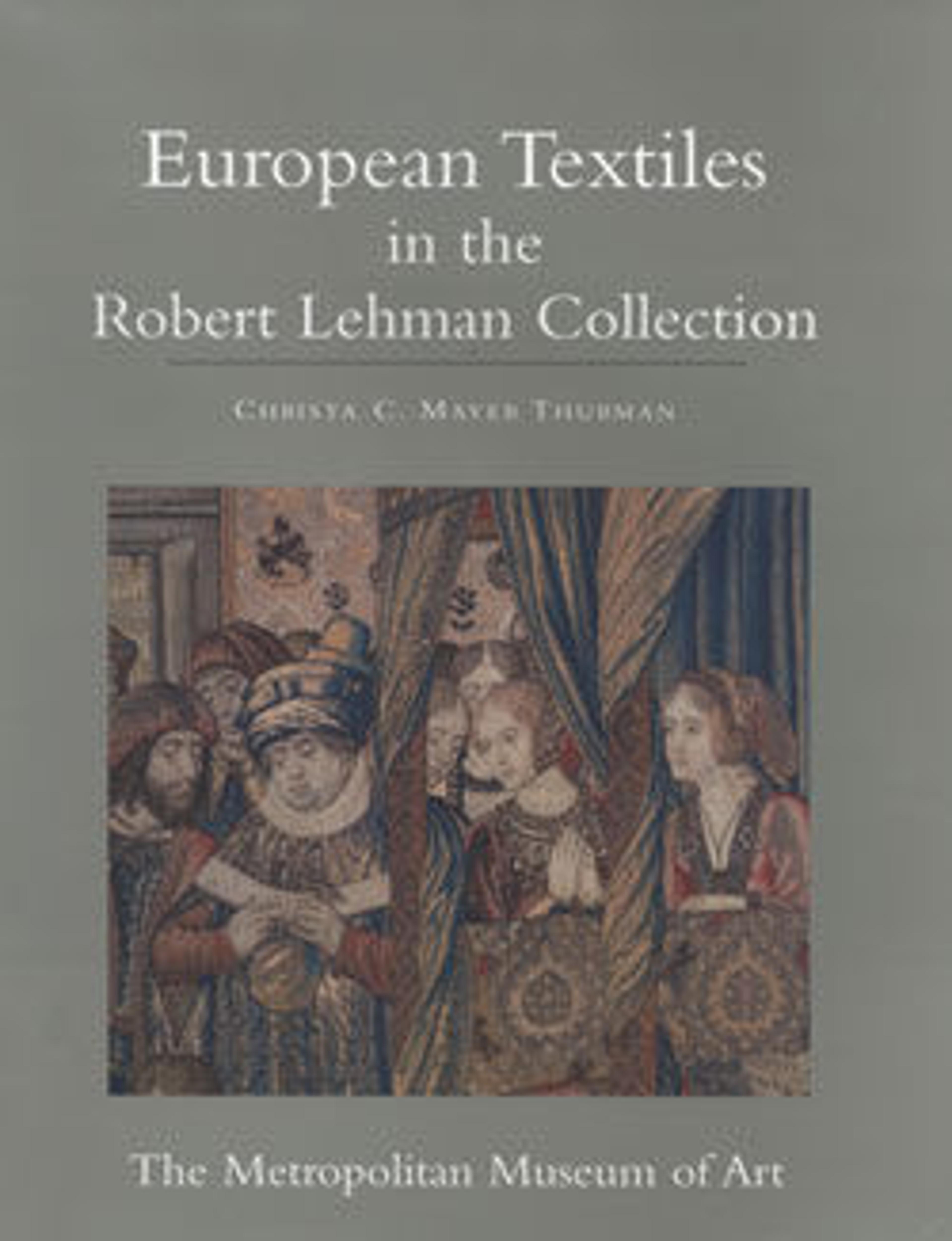Saint Martin and Saint Hilary
This roundel, together with three others in the Lehman Collection (1975.1.1906, 1975.1.1907, and 1975.1.1909), and two in The Cloisters Collection (47.101.63 and 47.101.64), form part of the same series of early fifteenth-century Franco-Flemish embroideries depicting scenes from the life of Saint Martin. Originally part of a much larger ensemble (thirty-six roundels and panels are now dispersed among public and private collections), the embroideries may have decorated a liturgical vestment, an altar frontal, or possibly a combination thereof, constituting a set of vestments.
Having left the Roman army, Martin devoted himself to religious life and became a disciple of Saint Hilary, Bishop of Poitiers in France. Saint Martin is portrayed kneeling before the Bishop, who is ordaining him as acolyte. This series of embroideries, if not originally intended for a liturgical garment, may have embellished an altar frontal, similar to the blue covering that appears here on the altar behind the kneeling figure of Martin. The upper portion of the altar, adorned by a Crucifixion scene, may have been conceived as a painted or embroidered altar covering.
Having left the Roman army, Martin devoted himself to religious life and became a disciple of Saint Hilary, Bishop of Poitiers in France. Saint Martin is portrayed kneeling before the Bishop, who is ordaining him as acolyte. This series of embroideries, if not originally intended for a liturgical garment, may have embellished an altar frontal, similar to the blue covering that appears here on the altar behind the kneeling figure of Martin. The upper portion of the altar, adorned by a Crucifixion scene, may have been conceived as a painted or embroidered altar covering.
Artwork Details
- Title: Saint Martin and Saint Hilary
- Date: 1430–35
- Culture: Flemish
- Medium: Linen plain weave underlaid with linen plain weave (two layers) and embroidered with silk and gilt-metal-strip-wrapped silk in single satin, split, and stem stitches, laid work, and couching, including or nué
- Dimensions: Diameter (above measurement of mount opening): 6 1/2 in. (16.5cm)
- Classification: Textiles-Ecclesiastical
- Credit Line: Robert Lehman Collection, 1975
- Object Number: 1975.1.1908
- Curatorial Department: The Robert Lehman Collection
More Artwork
Research Resources
The Met provides unparalleled resources for research and welcomes an international community of students and scholars. The Met's Open Access API is where creators and researchers can connect to the The Met collection. Open Access data and public domain images are available for unrestricted commercial and noncommercial use without permission or fee.
To request images under copyright and other restrictions, please use this Image Request form.
Feedback
We continue to research and examine historical and cultural context for objects in The Met collection. If you have comments or questions about this object record, please contact us using the form below. The Museum looks forward to receiving your comments.
